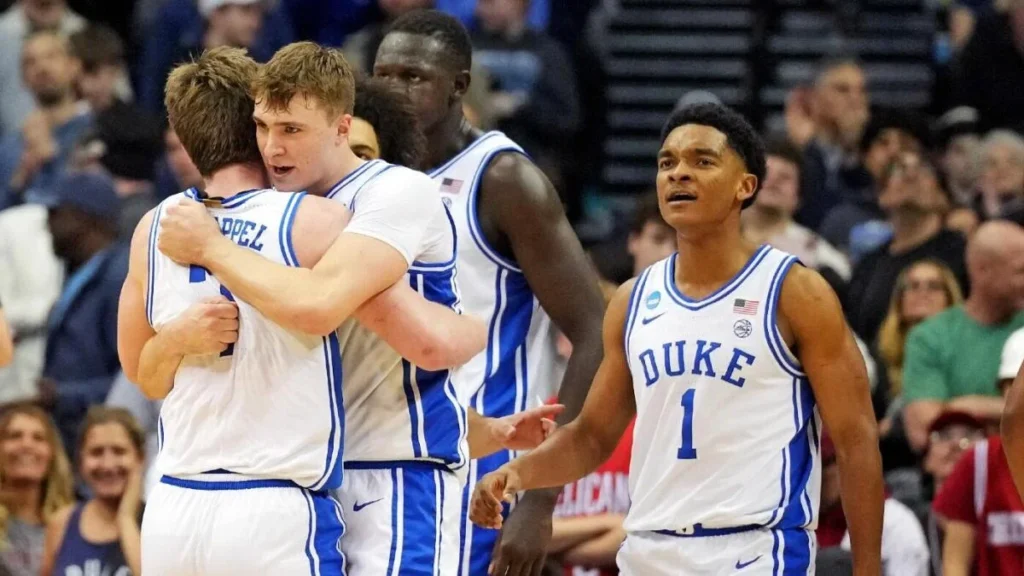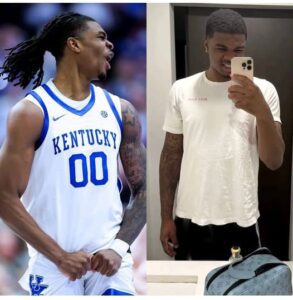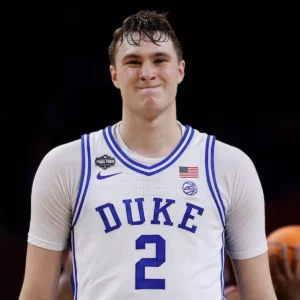
Scheyer’s Blueprint: Inside Duke Basketball’s Transfer Moves, 2025 Recruits, Roster Outlook, and Future Targets
When Jon Scheyer succeeded Mike Krzyzewski as the head coach of Duke basketball in 2022, he inherited more than just a program with a rich tradition—he inherited a brand, a target on his back, and the immense pressure of continuing a legacy forged by decades of dominance. Now, a few seasons in, Scheyer’s version of Duke is no longer just an extension of the Coach K era—it’s uniquely his. As the Blue Devils pivot into the 2025-26 cycle, the program has leaned heavily into the modern tools of roster building: transfer portal navigation, NIL alignment, and long-range recruiting precision. With insiders shedding light on Duke’s internal strategy, we’re diving into the full scope of Scheyer’s roster management—what’s happened, what’s coming, and how Duke is shaping up for another national title run.
First, let’s tackle the most immediate storyline: the transfer portal. In a college basketball environment where loyalty is fluid and roster turnover is a given, Duke has been active without being desperate. The Blue Devils lost a few key players to the portal—some expected, some less so. Jaylen Blakes, a seasoned guard who brought energy and defensive tenacity off the bench, entered the portal seeking more playing time. While his departure isn’t devastating in terms of minutes or production, it does cost the team one of its few elder statesmen and a known locker room leader.
Perhaps the bigger surprise was the exit of forward Mark Mitchell. After starting most of his games over two seasons, Mitchell was viewed by many within the program as a potential breakout player if he returned for his junior campaign. But in an era where players seek fit, freedom, and future earnings, Mitchell saw the writing on the wall—especially with Duke’s frontcourt logjam and the coaching staff’s clear emphasis on developing newer, more versatile bigs.
To counter those losses, Duke has actively pursued impact players in the portal. Sources confirm the Blue Devils have been in advanced discussions with several high-profile names, including a pair of combo guards and a stretch-four from a mid-major who averaged 17 points and 8 rebounds last season. While Duke hasn’t officially landed any commitments at the time of writing, the staff is confident that at least two portal additions will be finalized before May ends. A couple of names gaining traction among insiders: Saint Mary’s wing Aidan Mahaney and Belmont forward Cade Tyson. Both would bring scoring, experience, and immediate rotation value.
Then there’s the 2025 recruiting class—arguably the most intriguing part of Duke’s future equation. Scheyer and his staff are targeting quality over quantity, prioritizing versatility, IQ, and positional interchangeability. The crown jewel at the moment is five-star guard Cayden Boozer, the son of Duke legend Carlos Boozer. Cayden isn’t just a legacy pick—he’s a true lead guard who blends court vision with poise, and his skill set could fit perfectly into Scheyer’s modern motion-based system.
Duke is also pushing hard for top-10 forward Koa Peat, a 6-foot-8 bruiser with a refined mid-range game and the frame to defend multiple positions. Peat’s recruitment is still wide open, but Duke is believed to be in the final group alongside Arizona and Baylor.
Another name to know: Caleb Wilson. The Georgia native has skyrocketed into top-five territory in recent months, and his game is eerily reminiscent of a young Jayson Tatum. Wilson’s ability to play inside and out has made him a must-get for programs nationwide, but Duke has gained ground thanks to a strong visit last fall and consistent attention from assistant coach Chris Carrawell.
Scheyer’s 2025 class might not be large, but it could be deadly efficient. If Duke lands two of the three top-tier targets they’re after—Boozer, Peat, or Wilson—it could form the backbone of a team that contends for a Final Four within a year of their arrival.
As for the current roster, there’s a lot to like—starting with returnees like Caleb Foster and Jared McCain. McCain, who tested the NBA Draft waters but ultimately decided to return for his sophomore season, brings star power, confidence, and a scoring punch. Insiders say McCain’s return was not only about improving his draft stock but also about unfinished business. His leadership, both on and off the court, will be vital for a team that lost Kyle Filipowski to the draft.
Foster, meanwhile, has been quietly developing into one of the most polished point guards in the ACC. With a full offseason of strength training and film work, he’s expected to take a significant leap in both production and command.
On the wings, Tyrese Proctor’s decision to return gives Duke a stabilizing two-way force. Proctor’s playmaking, perimeter defense, and ability to guard multiple spots make him a linchpin in Scheyer’s scheme. With Proctor, McCain, and Foster all returning, Duke arguably boasts one of the most experienced and dynamic backcourts in college basketball.
Down low, there’s less certainty but plenty of potential. Sean Stewart, who showed flashes of brilliance in limited minutes last season, is expected to see a massive increase in responsibility. The 6-foot-9 forward is a relentless rebounder and a willing defender, though he still needs to expand his offensive game. If Stewart develops a consistent mid-range jumper or adds a reliable post move, he could be a breakout star.
There’s also incoming freshman Khaman Maluach, a 7-foot-1 center from South Sudan by way of NBA Academy Africa. Maluach is raw but possesses elite shot-blocking instincts and surprising agility. He’ll need time to adjust to the college game, but his upside is undeniable.
With a current roster that blends returning talent with elite upside, plus pending transfer additions and elite recruits in the pipeline, Duke’s roster is closer to being a finished product than most realize. The key for Scheyer will be chemistry and timing—getting his veterans to lead, his newcomers to buy in, and the whole unit to peak in March, not November.
The recruiting board beyond 2025 is also a work of art in progress. Duke’s staff is already scouting the 2026 class aggressively, with offers out to five-star guard Tyran Stokes and wing phenom AJ Dybantsa, who many believe could reclassify to 2025. Dybantsa in particular would be a program-altering talent—an electric scorer with size, swagger, and the ability to dominate in transition.
Scheyer’s approach to recruiting is layered. He’s not just seeking the best players, but the best fits. He’s targeting players who value development, who see Duke not as a pit stop but as a launching pad. NIL plays a role, of course, but sources inside the program say Duke is leveraging NIL to enhance the experience, not to simply outbid other programs. That approach has resonated with families looking for long-term growth over short-term cash grabs.
The final piece of the puzzle is Scheyer himself. The young coach has taken his lumps, no doubt. He’s lost close games, navigated injuries, and faced the unfair comparisons to a legend. But he’s also earned respect. He’s adapted. He’s learning. And perhaps most importantly, he’s recruiting at a level that suggests Duke’s best days are still ahead.
Insiders point to Scheyer’s authenticity as his greatest strength. He’s not trying to be Coach K. He’s trying to be the best version of Jon Scheyer. And that version is sharp, relentless, and innovative. He connects with players in ways that matter, and his staff reflects that ethos. Guys like Amile Jefferson and Carrawell have helped create a culture that blends tradition with evolution.
As the 2025 cycle takes shape, it’s clear Duke is building not just for another tournament run, but for another era of dominance. With smart portal moves, elite recruits, and a roster already brimming with talent, Jon Scheyer’s program is proving that the more things change, the more the Duke standard remains the same.





